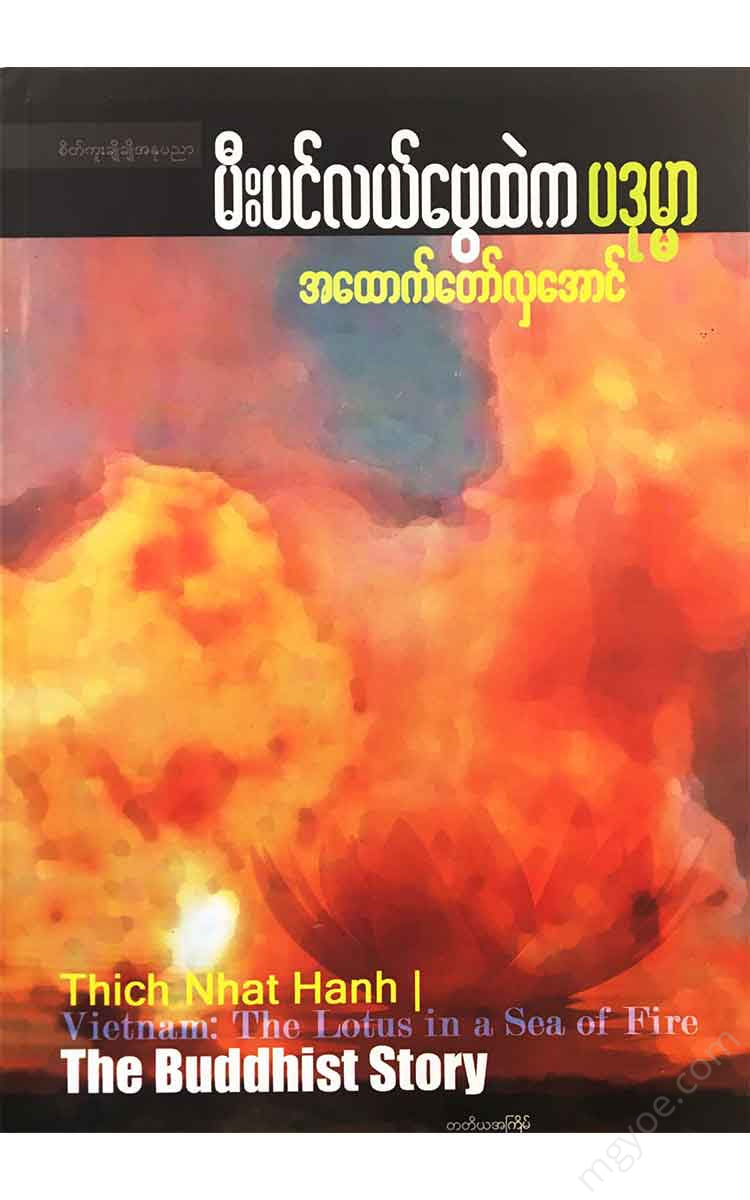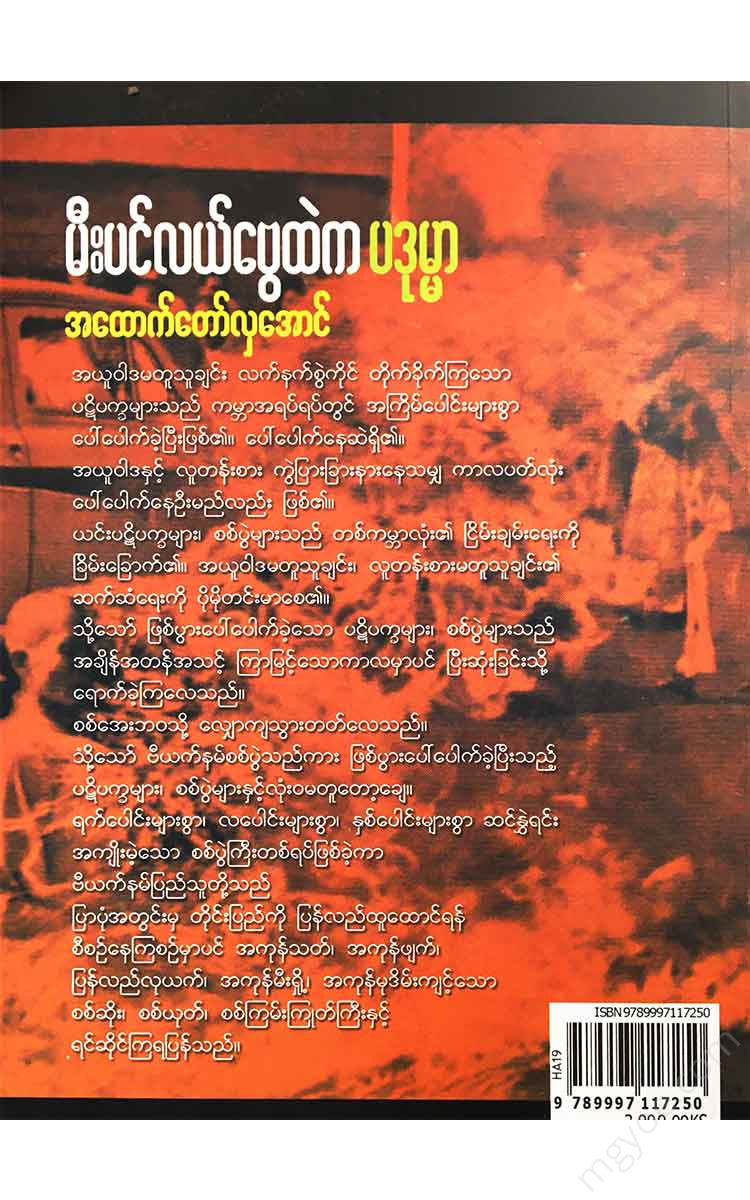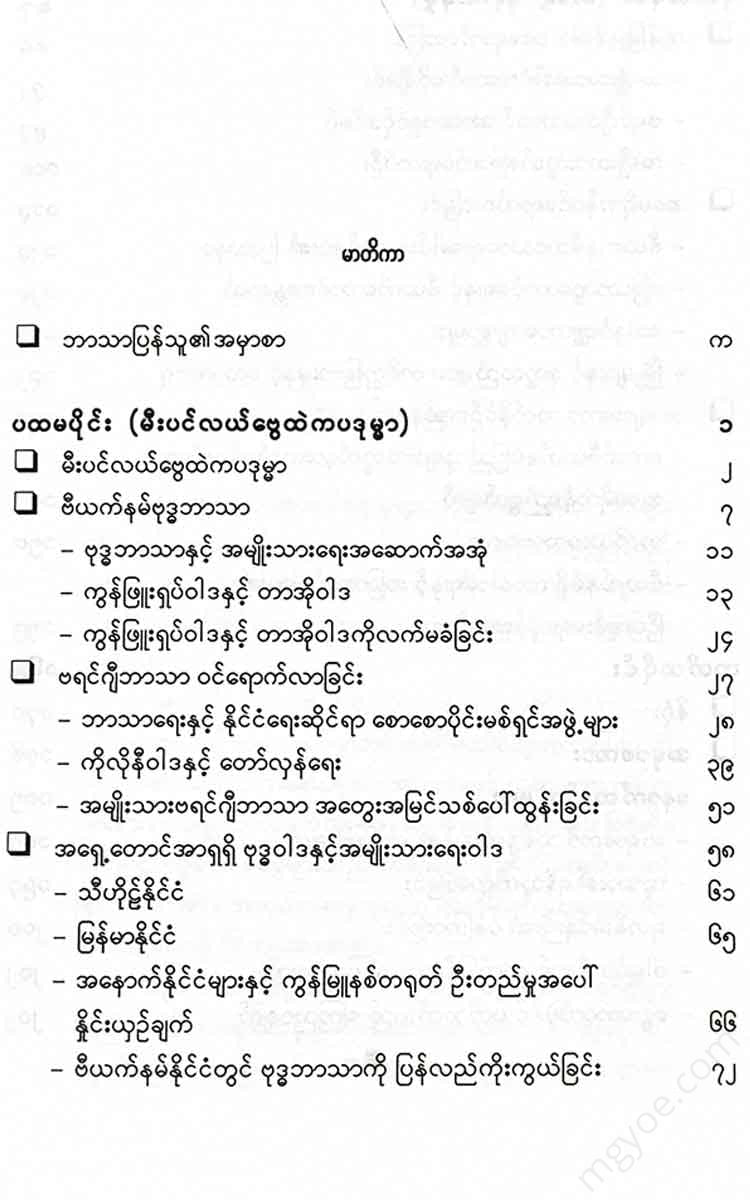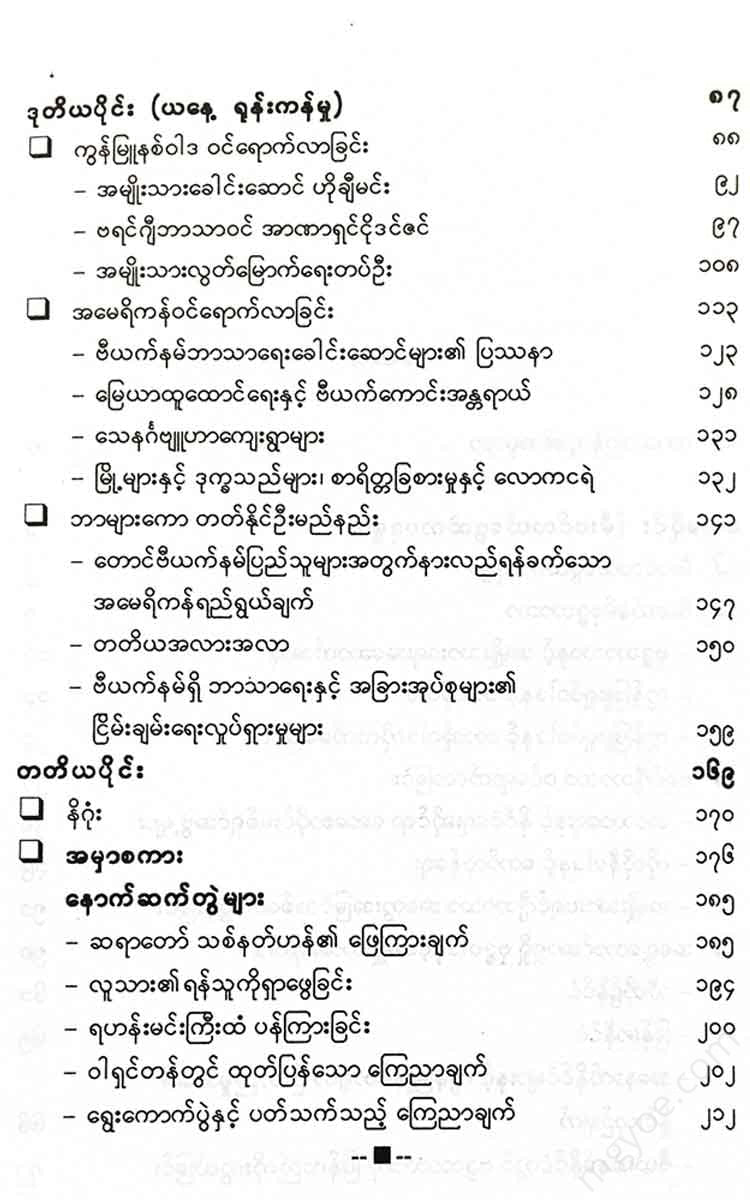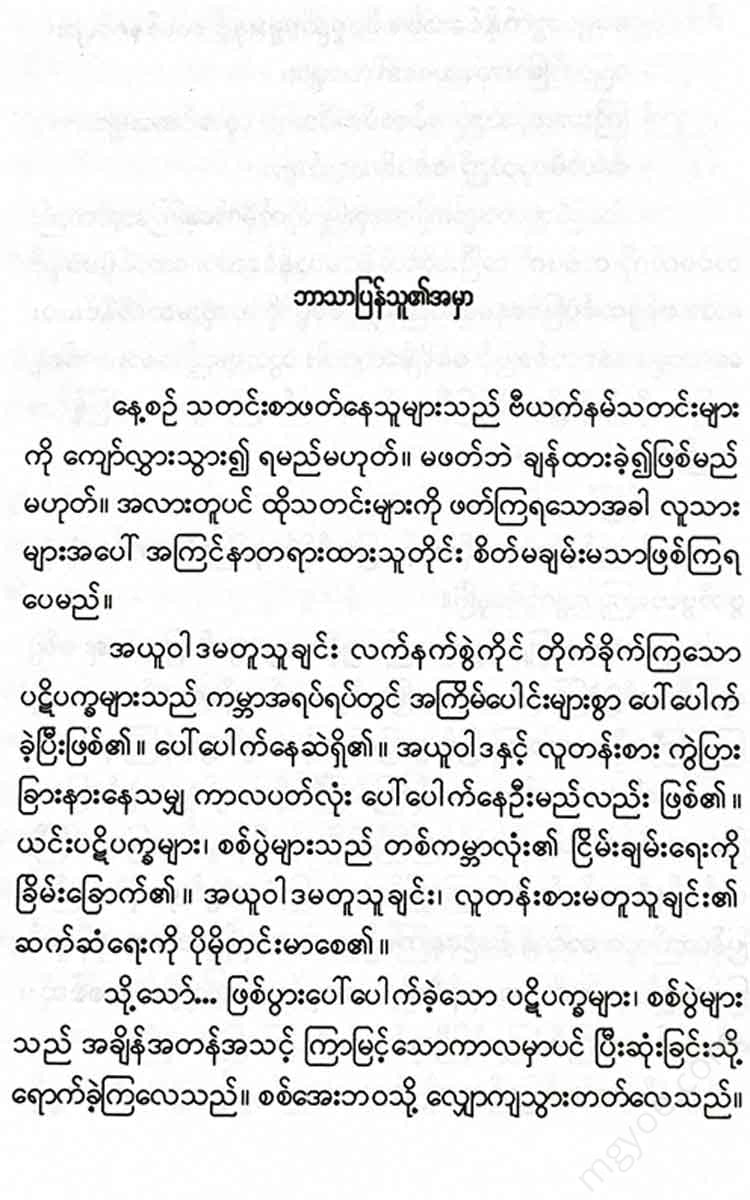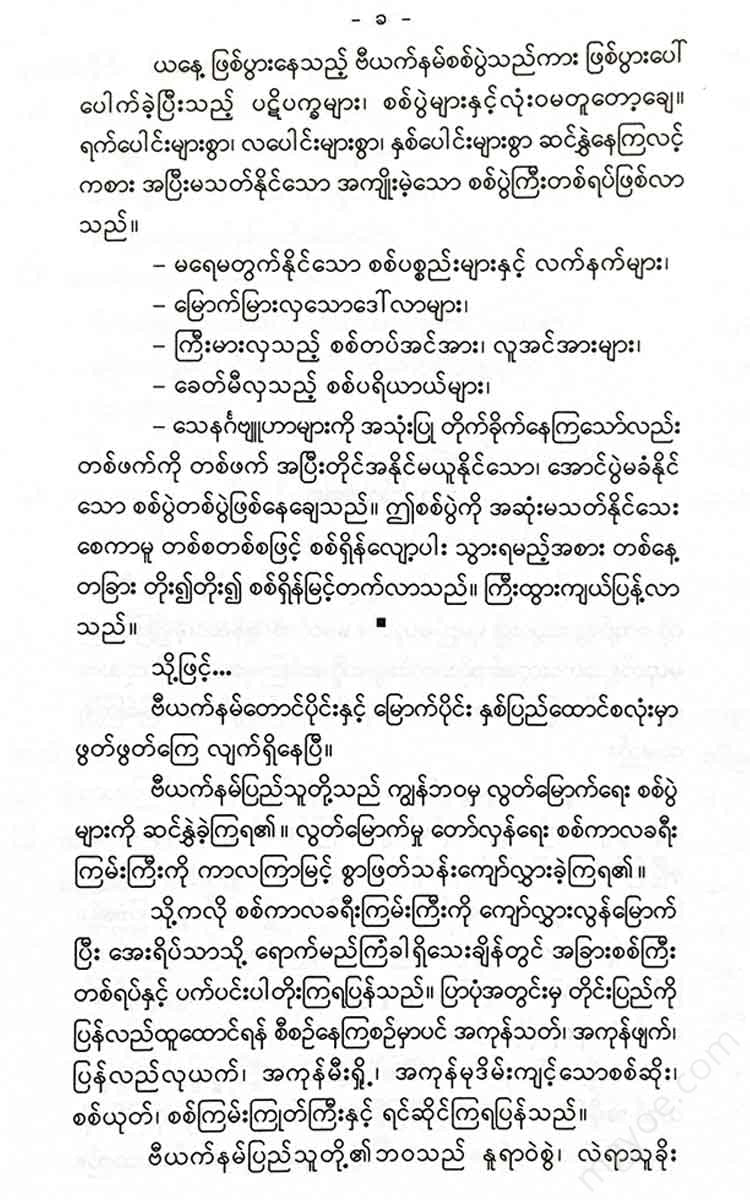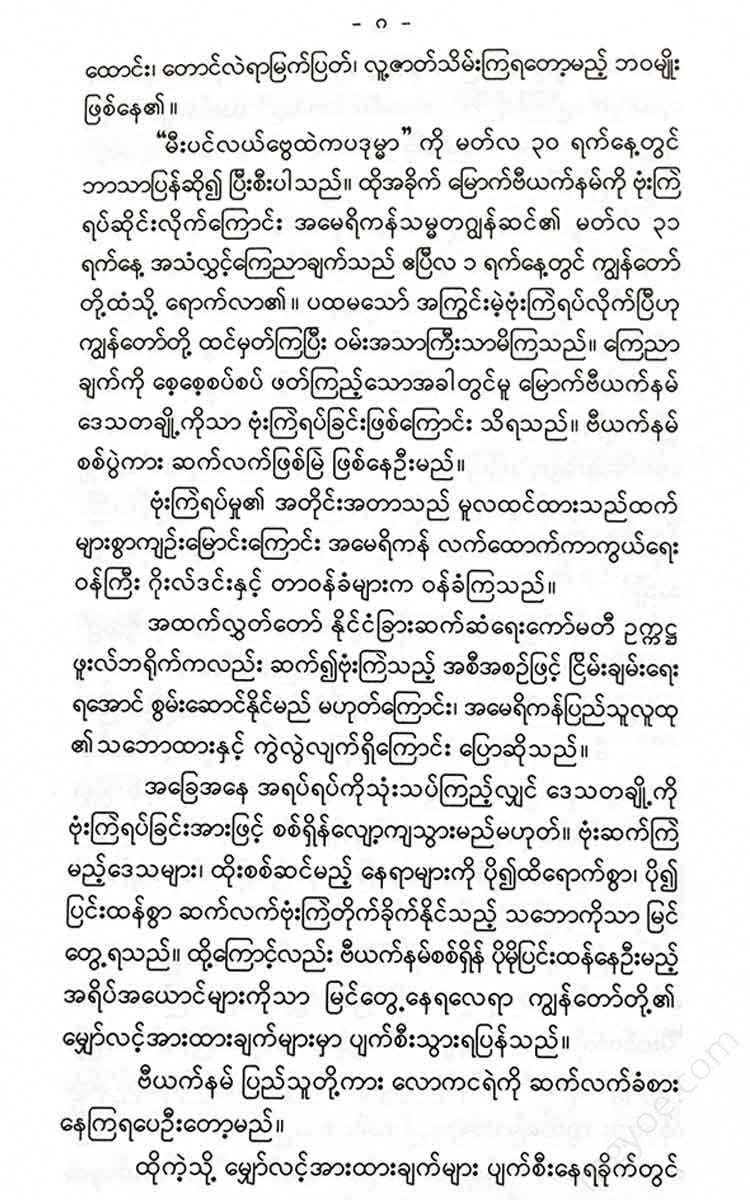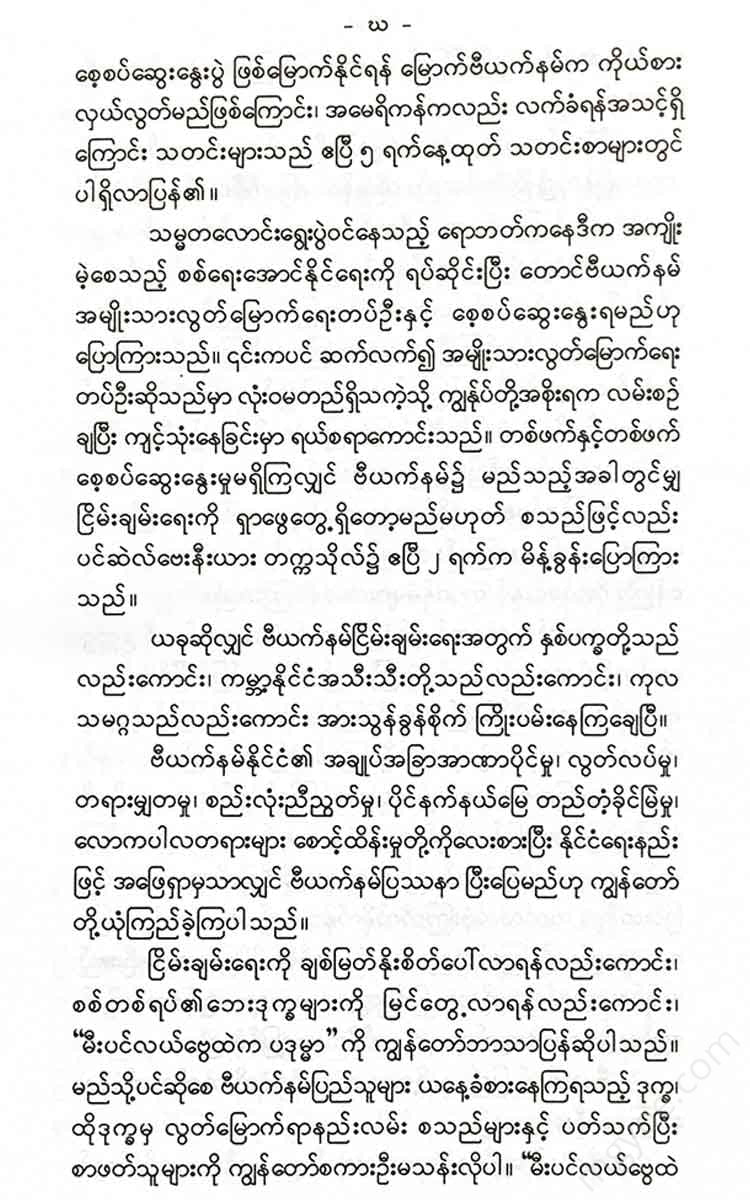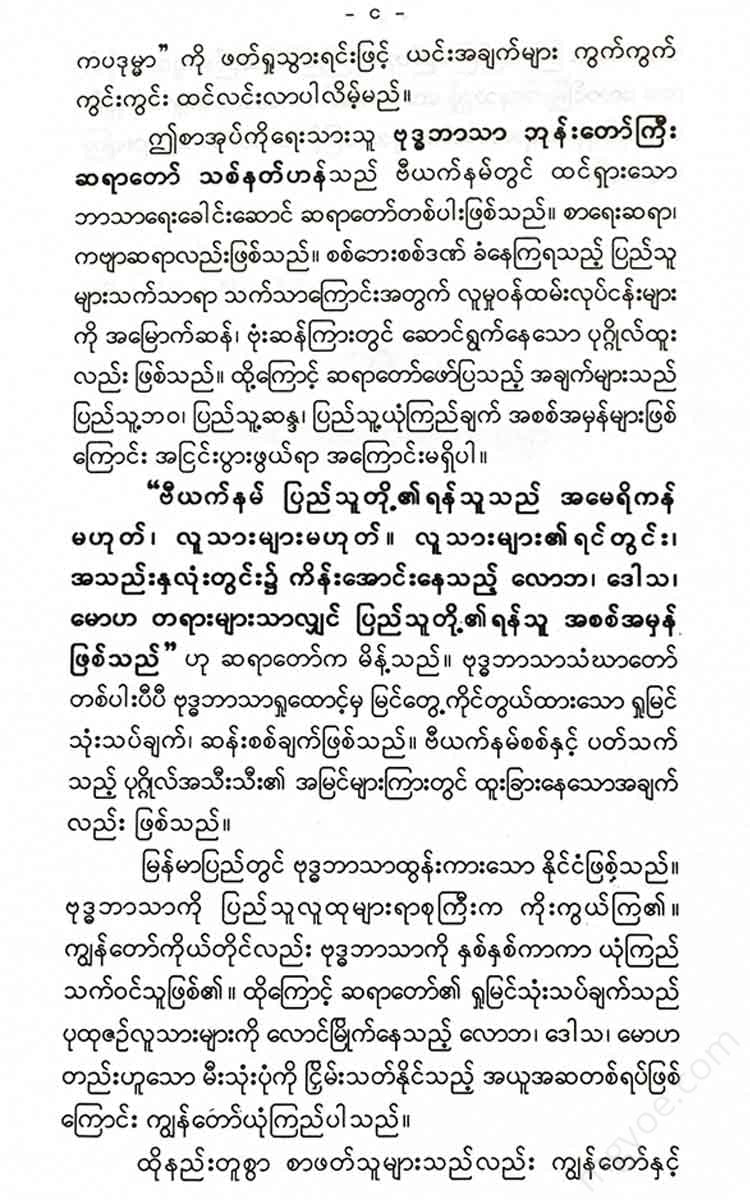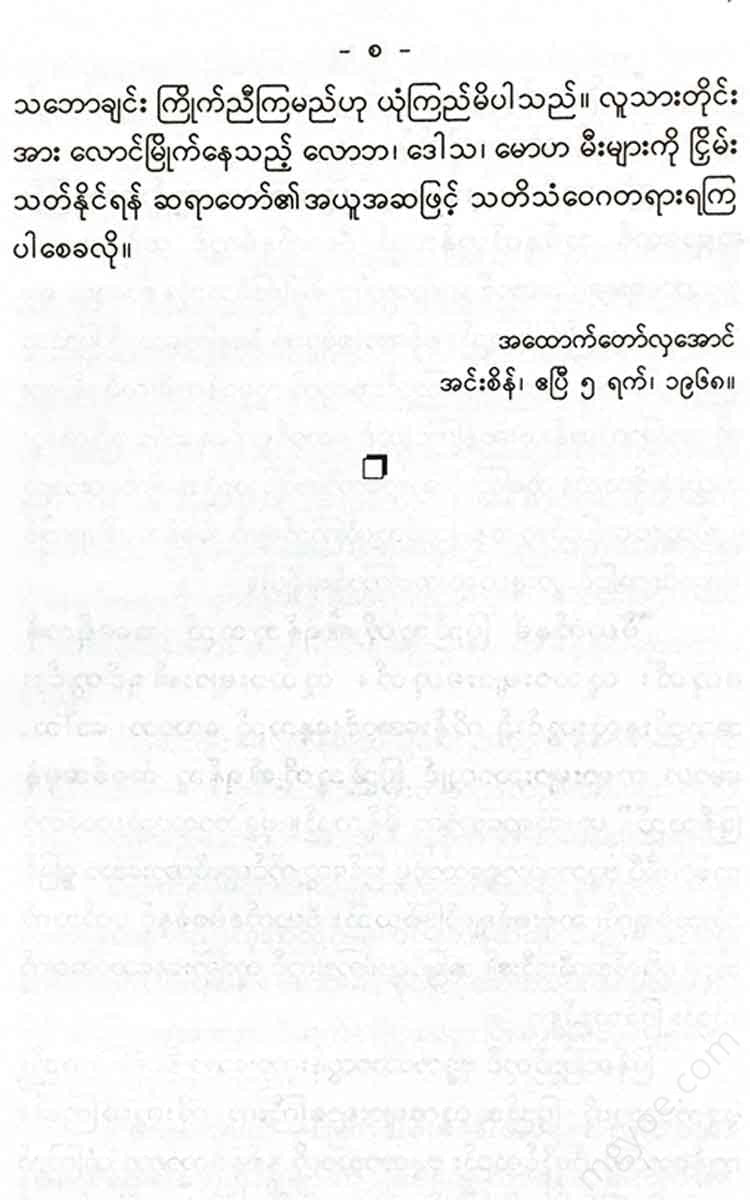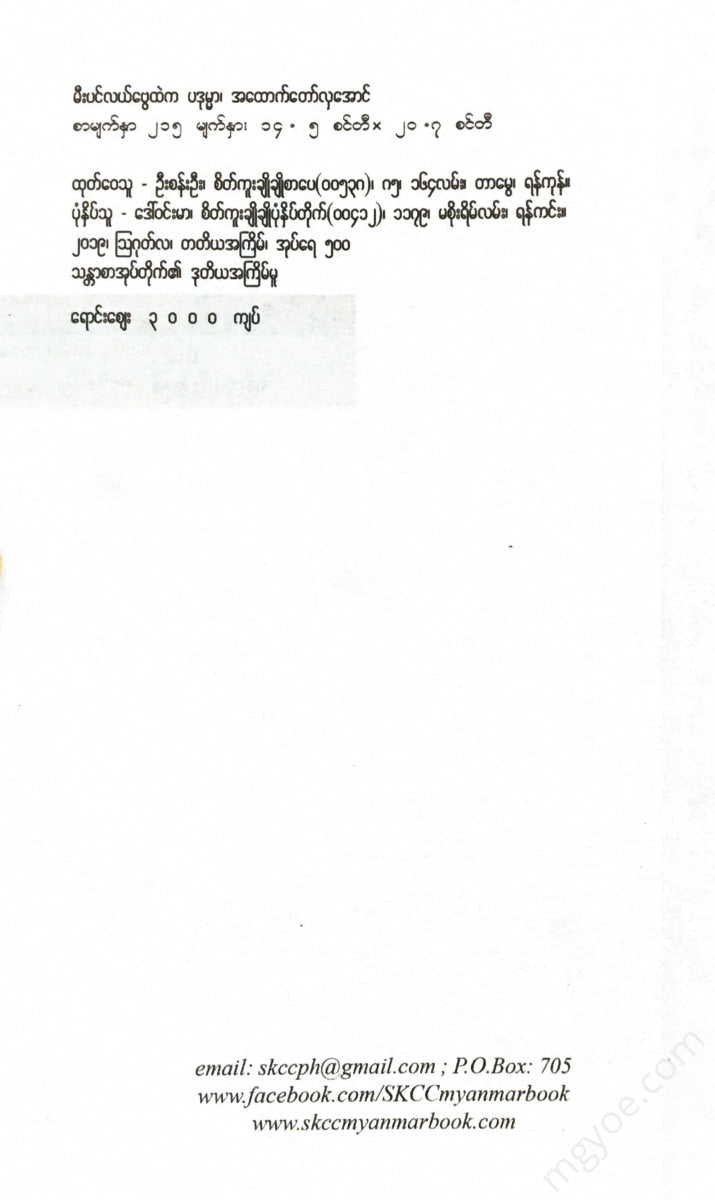စိတ်ကူးချိုချိုစာပေ
Athitaw Hla Aung - Paduma from the Sea of Fire
Athitaw Hla Aung - Paduma from the Sea of Fire
Couldn't load pickup availability
Paduma from the sea of fire
On June 11, 1963, Buddhist monk Thi Quang Dup set himself on fire in protest on Phan Dinh Phan Street in Saigon, South Vietnam. He set himself on fire to show the world the suffering that the people of South Vietnam were suffering under the oppressive government of President Ngo Dinh Tinh. It was only after Buddhist monk Thi Quang Dup set himself on fire that the world began to pay attention to the problems of the Vietnamese people and the role of Buddhists and to make real efforts to resolve them.
The self-immolation of Buddhist monk Thik Kumtapat has caused more excitement in the West than in the East. The West is more affected by the religious and cultural backgrounds of the East and the West, which are very different.
I met an American doctor on a plane from New York to Stockholm. She asked me a lot of questions about Vietnam.
The doctor finds it difficult to accept the self-immolation of a monk named Thich Quang Dup in protest of his agreement to end the Vietnam War. The doctor sees Thich Quang Dup's self-immolation as the behavior of a mentally unstable person. She understands that it is simply the loss of control of a person who is foolishly obsessed with something that is rude, violent, explosive, and unreasonable.
I explained that Sayadaw Thik Kwan Dap was over 70 years old, that I had lived with him for almost a year in Longmin Pagoda, that I had found him to be a very gentle, kind, and strong-willed monk, and that he had remained calm even when he was about to set himself on fire in protest. However, the American doctor was not convinced.
I will not continue to talk about this. I understand that he will not be able to understand this. The doctor has no basis for understanding. He sees the arson protest from his own perspective and is not willing to consider it from any other perspective. Therefore, he is not able to understand this.
Since the monk's protest, the world has been bringing to the forefront the many monks and the many preconceived notions about Buddhists in Vietnam. Most Westerners have little knowledge of Buddhism. They see it as a religious practice. They view monks as uneducated, poor, and impoverished people with powers that are hard to believe in, bald, non-vegetarian, and praying to be saved from rebirth.
Some Westerners also saw Buddhist monks as causing trouble, causing unrest, and interfering in the anti-communist war in South Vietnam.
Westerners understand Buddhist monks as nothing more than sheep trying to deceive the wolf in order to escape the danger of the communists.
Estimates of the Buddhist population in South Vietnam are beginning to be made. The efforts of Buddhists are also becoming more visible. It seems that people are finally beginning to understand Vietnamese Buddhism. It is no longer far-fetched.
Earlier this year, I met an Italian journalist in Saigon. There were student and public clashes in Hue and Da Nang. The Italian journalist told me that in the early days of his stay in Hue, he had understood the conflict well, but when he delved deeper into the incident, he found it incomprehensible and unclear. He spent two weeks in the former imperial capital of Hue and left in a state of confusion.
Even those who live in Hue and Saigon have a hard time understanding the truth of what happened. It is even harder for a foreigner to understand anything about Vietnam. Not only that, but spies and our own reporters who are busy inside Vietnam are sending false information to various foreign news agencies. We have also lost contact with the departments and individuals who can provide us with accurate information.
I recently visited Hue myself. I am a Vietnamese born in Vietnam. I have been a Buddhist monk for 20 years. However, I spent 5 days in Hue to investigate the true nature of the incident. Despite my efforts, I found it very difficult to answer the questions of foreign journalists in Saigon. I had to try very hard to make them understand.
Vietnam has been at war for 20 years. Vietnam, which has been going through a long period of war, is facing instability. It is in turmoil. Unjustified killings, destruction of human life and public property are happening every day. A lot of money is being spent every day to destroy human values. The entire Vietnamese people are experiencing great doubts, uneasiness, and dissatisfaction.
All people are corrupt. Money is being misused. The money in the hands of corrupt people is only useful for buying women, politicians, generals, and so-called intellectuals. The corruption of those who have money is spreading to those who do not have money, corrupting them.
In such a situation, the peasants, who make up ninety percent of the population of South Vietnam, approach their religious leaders for help. They seek refuge. The circumstances make it impossible to seek refuge. When the people are in trouble, the Buddhist community is dissatisfied and blames the religious leaders for being silent and indifferent.
The flow of a river is not caused by the water flowing in front of it, but by the water flowing behind it. The water flowing behind is the driving force of a current.
The involvement of Buddhist monks in non-religious social issues can be explained by the events. The current situation in Vietnam will reveal the reality. Due to various circumstances, Buddhism is inevitably involved in the lives of the people.
It is necessary to have a good understanding of the background history and the status of Vietnamese Buddhism. It is necessary to understand the relationship between Buddhism and social phenomena in Vietnam today.
Only then can we better understand the situation of Buddhists in Vietnam today.
